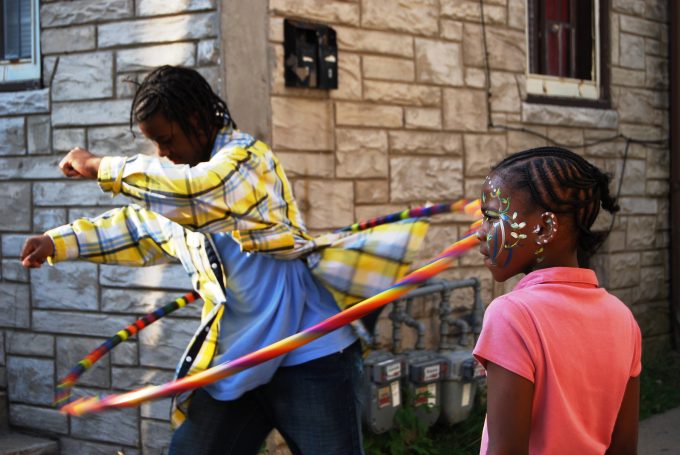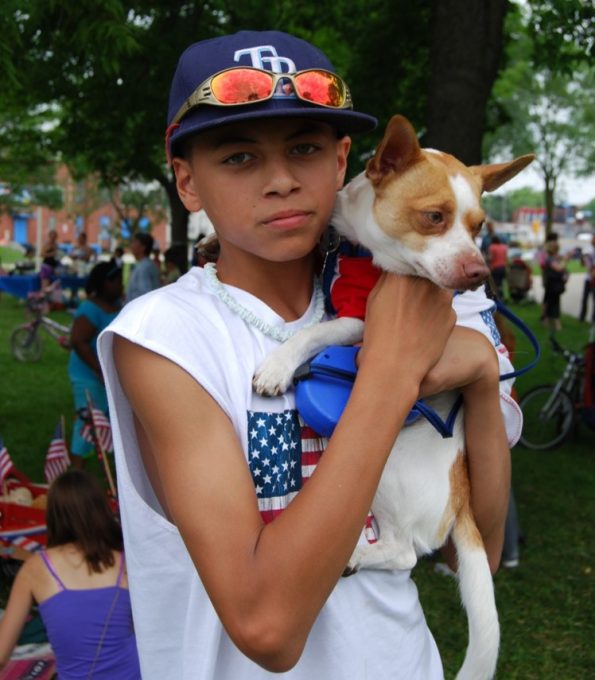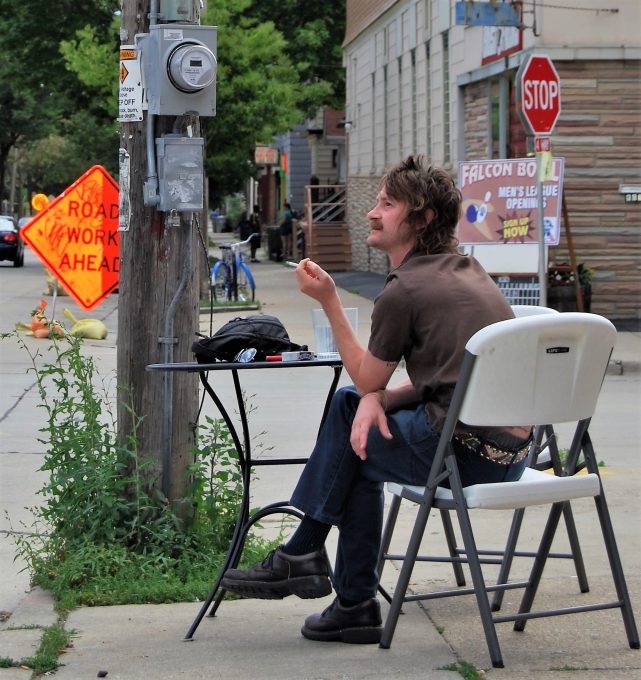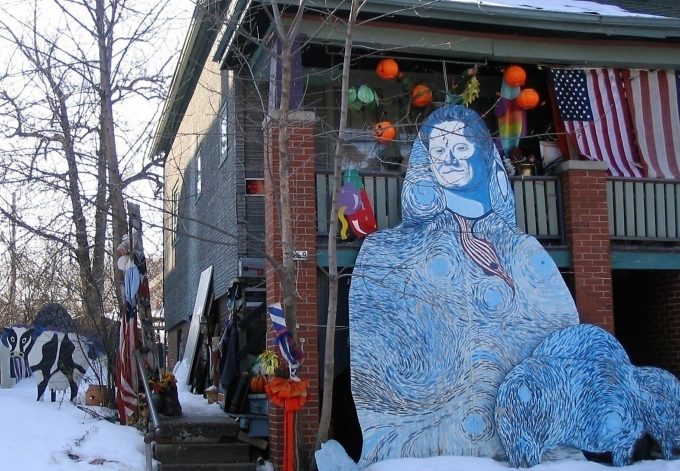can conflict create good community?
This article was first published in the Spring 2022 issue of Contexts Magazine. That version contained errors upon publication. This was the fault of the production team and not the author. A formal correction was issued in the Summer 2022 issue of Contexts, and the article below is the corrected version.

It’s 2 AM. Crystal and Travis are having a screaming match on their front porch. The argument wakes up their neighbor, Carla. She considers calling the police, but the urge passes quickly. She likes Crystal and Travis. They are, for the most part, good neighbors. They are caring parents. Crystal is laid back and sharp-witted. She’s working hard to finish her degree. Gregarious Travis brings life to the block, shouting greetings from his front porch. A carpenter, he occasionally helps neighbors with repairs. Carla is confident Travis would have her back if someone tried to mess with her. She also knows Travis has a criminal record. The last thing his family needs is a visit from the police because they often do more harm than good. Carla pulls a pillow over her head and tries to get back to sleep. The next morning, she knocks on Crystal and Travis’s door and gives them the business. “Next time, you better take that inside.” They apologize and assure her they will.
I met Crystal, Travis, and Carla when I spent three years living in and studying Riverwest, one of few economically and racially mixed neighborhoods in the city of Milwaukee. There is a high potential for conflict in this community where residents have varying ideas about who should be doing what, where, and when. Neighbors have different definitions of appropriate leisure pursuits, economic activities, noise levels, shared space use, property maintenance, and parenting practices. The tensions and clashes arising from these differences in socially mixed neighborhoods like Riverwest worry city planners, policymakers, and champions of neighborhood integration. Their concern is that difference produces conflict, which is bad for community.
Many communities attempt to reduce the potential for such clashes by limiting the diversity of their neighborhoods. They block affordable housing development or fight efforts to create public transit connections between their neighborhoods and Black and Latinx areas of the city. Other communities enact zoning regulations that require minimum lot sizes or forbid multifamily housing, making it difficult for lower-income families to access high-resource neighborhoods. Notably, these exclusionary class-based zoning ordinances proliferated in the United States after race-based zoning (i.e., designating whites-only neighborhoods) was ruled unconstitutional in 1917. They provided a seemingly race-neutral way to keep “undesirable” people out.
Some racially and/or economically mixed communities limit the potential for conflict by establishing and enforcing strict rules of conduct—essentially mandating conformity in an attempt to flatten or erase differences. They impose design standards to preserve neighborhood character, regulating aesthetic choices like house color, decoration, or landscaping. They enact local ordinances that limit the visibility of activities deemed threatening to the community’s reputation. No growing food or barbecuing in the front yard. No hair braiding on the front stoop. No hanging out (framed as loitering) in public spaces. Such rules buttress classed and raced norms and are enforced in ways that intensify the surveillance and policing of lower-income and non-white residents.
These methods of producing community “harmony,” “improvement,” or a sense of order manage difference through exclusion or coerced assimilation. They privilege the comfort and tastes of relatively advantaged residents (e.g., homeowners, those with more economic resources, and those who are white). The danger of using harmonious relations as a measure of a successfully mixed community is that it can obscure issues of power and inequality. Whose definition of a good neighborhood is being successfully enforced? At what cost?

Live and Let Live
In Riverwest, a community of Black, Latinx, and white renters and homeowners, there are competing ideas about neighborhood quality of life, what constitutes a problem, and how to address local issues. Some residents believe the neighborhood’s potential is limited by local disorder and crime. They are frustrated by neighbors who make too much noise, drink publicly, run illicit businesses, or fail to appropriately maintain their property. They work with city agencies and police to enforce rules and improve the neighborhood by holding everyone to what they see as mainstream standards. While their efforts are sometimes successful, they are often thwarted by those who embrace the “live and let live” approach to negotiating neighborhood relationships.
Many of those who live in Riverwest are more flexible in their assessments of problems. To “live and let live” is to give others space to live their lives as they see fit, provided doing so doesn’t cause harm. Harm is defined less by laws and mainstream standards than by perceived negative effects on neighbors. The residents adopting this approach tend to contextualize the potentially problematic behavior of neighbors with information about the individual troublemaker. Lisa was recently laid off and probably can’t afford home repairs. Sure, Jerry wanders up and down the block with a beer in his hand all day, but he keeps an eye on things. When a neighbor’s actions cross a line, residents begin with informal and direct means of handling of the problem. They confront the neighbor or appeal to someone in their network who might have influence. Involving city agencies or the police tends to be a last resort.
The” live and let live” approach to neighborhood life produces a negotiated local order that requires ongoing attention and adjustment as neighbors deal with differences and manage conflicts. These conflicts sometimes strain neighbor relations, harden social boundaries, discourage investment in Riverwest, or end in violence. But the longer I lived in the neighborhood, the more I came to appreciate the upsides of everyday on-the-block conflicts. Most of us are familiar with the negative consequences of conflict. I focus here on the constructive contributions of conflict to community life.

The Upsides of Conflict
Conflict inspires collaboration. Many blocks in the neighborhood have war stories. I heard myriad tales, for example, of neighbors coming together to address a trouble spot on the block. As the activities around a drug house or a problem-magnet bar escalate, affected neighbors join efforts against the common threat. They reach out to those responsible for the trouble, confronting them about the issue and, in some cases, offering support or connections to resources. If direct engagement efforts prove ineffective, neighbors may apply collective pressure to the landlord. If all else fails, they coordinate efforts to engage the police. These battles are often long, exhausting, and costly, but residents also describe them as valued chapters in block life. They present opportunities for bonding with proximate neighbors, creating or deepening relationships (often across social divides), and forging a sense of belonging. They may have battle scars, but they are shared scars. Shared fate produced by a shared threat can expand residents’ notions of us.
Conflict clarifies shared expectations. Many Riverwest residents adopt a flexible approach to neighborhood norms and their regulation. This feature of local culture complicates attempts to impose a uniform set of standards—even legal standards—on a heterogeneous community. In such a context it can be difficult for a neighbor to determine if her response to an incident will garner support from her neighbors. Conflicts can offer moments of clarity. At a block watch meeting, Maria Perez complained about a group of young Black men hanging out near the corner store. One neighbor pressed her for more information. “But what are they doing, Maria?” When her response made it clear that Maria was troubled by their presence rather than their behavior, her neighbors dismissed her concerns. This confrontation disrupted notions of Black criminality, signaling that socializing while young and Black did not meet the block’s definition of a problem.
Conflict opens opportunities for airing multiple perspectives, expressing dissent, and challenging the legitimacy of dominant constructions of problems or standards. These openings are enabled by a “live and let live” culture that privileges contextualized assessments of issues and negotiation over the universal application of a rigid set of rules. Richard Quinn, a white, middle-aged man with heavy-lidded eyes and a raspy laugh, spent a lot of time in the neighborhood. He was experiencing homelessness, and one of his preferred hangouts was an empty corner lot. Though technically private, it was often used as a public space. Richard would sit on the grass, sometimes sipping from a can of malt liquor in a paper bag, and greet people as they passed. Over time he came to know many of us living on the surrounding blocks. Neighbors heading to the bus stop or walking their dogs would stop and chat with Richard. He was warm and engaging—a gentle spirit.
One evening, my neighbor Tracy was on her way to happy hour at a local bar when she heard another resident ordering Richard to leave the empty lot. He said Richard needed to go somewhere else because people don’t want to see this sort of thing in their neighborhood. Tracy was furious. She marched over to him and explained that she and her neighbors knew Richard and he didn’t cause any problems. Their disagreement escalated into a shouting match that ended with the man storming off.
Perhaps the man telling Richard to move was confident that in a “good” neighborhood, residents don’t want to see unhoused people drinking beer on vacant lots. Tracy was confident that her interpretation was shared by many of her neighbors who had repeated encounters with Richard. He was not blight. He was not out of place in the neighborhood. This conflict was about clashing assessments of who has a right to space, visibility (i.e., a right to be seen), inclusion, and worth. Richard regularly returned to his spot in the lot over the next few months. When I asked him about the incident, he shrugged it off. “I have people here.” Richard trusted that his connections secured a form of local belonging.

Harmony as Cover, Conflict as Messy Togetherness
When we interpret neighborhood conflict as simply “negative,” we miss its potential. When we use harmony or stability as indicators of successful integration or a “good” community, we miss the costs of apparent consensus. Whose ways of being in the world are deemed inferior or unacceptable? Who is being asked to assimilate? We also miss the value of instability for challenging inequality. Stability tends to favor the status quo, maintaining existing power relations. Everyday conflicts in Riverwest present opportunities for questioning the legitimacy of the established order. These might entail renegotiating local codes of conduct (which behaviors a block will endorse, tolerate, or condemn) or expanding categories of social worth and spatial belonging. They might poke holes in claims to “universal” definitions of neighborhood quality of life. Instability, in this case, does not devolve into disorder. Instead, it requires the ongoing negotiation of order—a stream of confrontations, resolutions, compromises, accommodations, and change as neighbors make a way to live together without erasing difference.

Comments 1
surveyzop
December 23, 2022They might poke holes in claims to “universal” definitions of neighborhood quality of life.